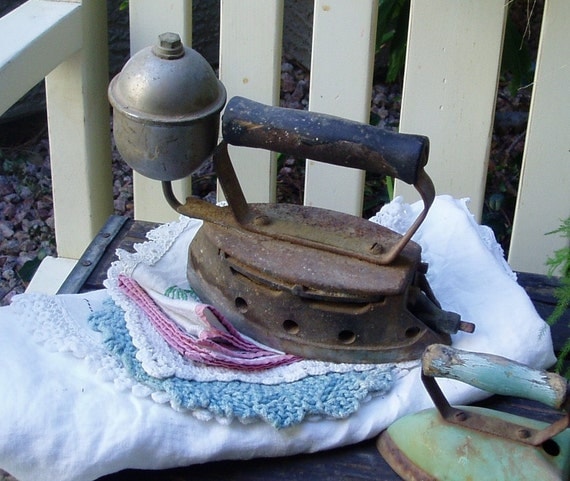

Just as streamlining was enabled by new technology, so was its demise.

Streamlining and early Electric steam irons A stunning exception to this is the Knapp-Monarch Steam King whose wood handle does not try beyond the wood's plasticity and achieves a wonderfully integrated and unique streamlined profile.

The results were usually awkward and not as cleanlined. Some attempts were made to use wood, a material of the previous generation, as a 'plastic' material. This, above a base used numerous times with completely different handles. Knapp- Monarch, who produced more variety in this field than any other manufacturer, used in this iron an unparalleled combination of multiple pieces of Bakelite, chrome bands, chrome leaves, color and texture. Then there are the irons that had a way unto themselves, and the Lady Dover 380 is one. At the end of the period the handle became completely integrated into the base: see the Westinghouse ID-72 as the prime example. Four first rate examples of this are the Erla F10, Montgomery Ward 24-DE-2669, General Mfg.

Most irons of this period were like this. Later, the handles became a single piece extending to the cowl at front and rear. In fact, GE, called this iron The Moderne. Its base, though somewhat squared off, continues the line of the handle and so together a truly new (modern) look is seen. The GE 149F84 successfully uses the new material Bakelite for its streamlined possibilities. Its handle is old style and the base is new style. The materials could be used plastically, that is moldable, so that soft curves could be produced and very wide variations in designs could be achieved.Įarly on, streamlined irons were smoother versions of early electrics: the bases were made with softer edges. The idea of streamlining and the materials, Bakelite, chromium plated steel and cast aluminum, were compatible. (Later it would be learned that weight is virtually unnecessary for the chore of ironing wrinkled clothes: steam will enable fabric to straighten out almost by itself.) It is ironic that an Iron, a word conveying weight, should aspire to and appear non-weighty but it was as well suited to the idea as were train locomotives and graphics. It conveys lightness, speediness, simpleness, sleekness, frugalness and the like. The leading edge is pointed and smoothed all is curved and curved softly. One can see it by thinking of what can be done to minimize the wind resistance of an object. Henry Dreyfuss, the pioneering and respected US industrial designer, is said to have called streamlining cleanlining. Irons from other countries show that they each had their own appealing answers to what a streamlined iron looks like. This collection is nearly all from the USA, and what is said here is about irons from the U.S. The development was not linear at every point. Some manufacturers used the idea earlier than others and others abandoned it sooner. It does not necessarily apply to actual year(s) the iron was produced. When an iron is said to be early, late or otherwise described, this applies to the development of streamlined design as it is seen in irons. Since then it has grown to number near 250, with 80 or more different manufacturers represented. The collection began in the early 1980s with a small cache of irons found at a church rummage sale.


 0 kommentar(er)
0 kommentar(er)
